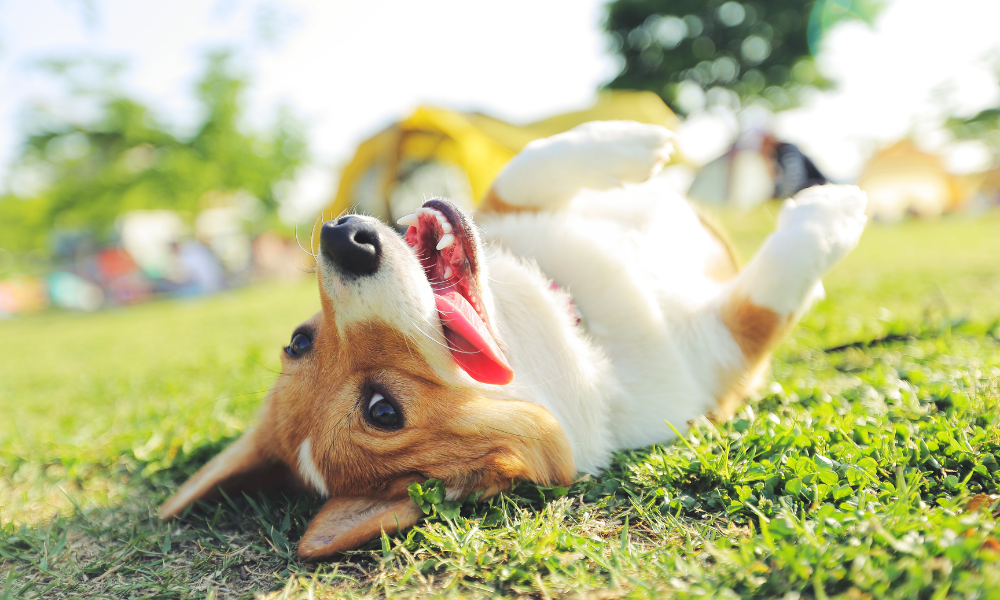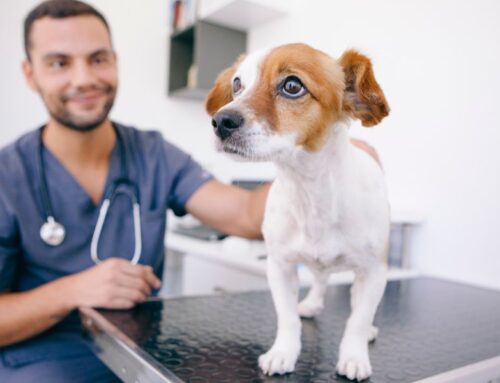A Guide To Understanding Dog Body Language
If you’re an animal lover and owner, you’ve likely at some point wondered how amazing the world would be if we could talk to our pets; to be able to chat with them and understand their thoughts and feelings. While certain dogs can memorize a limited vocabulary, they cannot fully express themselves through any of our human languages. As a result, the bond between pet and owner can be truly exceptional: two different species come together and care for each other without sharing a common language. But how is this connection created and fostered? How do we show our love for them, and how do they reciprocate the notion?
The answer to these questions is found in our dog’s non-verbal communication. We use this form of communication as the medium through which we understand our fur babies (and through which they understand us). Knowing the behavioral nuances of your dog and how they express their emotions is essential to pet owners for a variety of reasons. For example, let’s say you’re getting ready to take your pup in for a check-up at Pine Valley Animal Hospital. As you approach our building, he halts abruptly, digging his paws into the ground. His eyes are wide open, he’s licking his lips, and his posture is hunched over. What is he trying to tell you? And how can you make him feel safe and secure? How can you express to him that our staff is here to help keep him happy and healthy?
Dogs communicate through a variety of non-verbal behaviors to alert us of their emotions and potential dangers. While certain expressions will be unique to your pup, several universal patterns of communication have been observed in most breeds. Let’s explore the basics of dog body language and learn how to recognize the common signals that dogs use to communicate.
Wagging Tails
If your dog’s tail is wagging, they must be overjoyed, right? Well, not necessarily. A wagging tail is commonly misinterpreted to mean the dog is happy; however, this gesture can communicate a wide range of emotions. The movement of your pup’s tail simply expresses that they are emotionally aroused. While comfort and bliss are possible reasons behind a wagging tail, this emotional arousal can either be positive or negative. A couple important things to note:
- The faster the wag, the more emotionally stimulated the dog.
- Slow, long sweeps mean the dog is relaxed.
- Fast, twitching wags means the dog is alert and aroused. This movement is likely to indicate they are stressed or on guard.
Even the direction of the tail can denote a positive or negative emotion. For instance, a tail wagging to the right indicates the dog is responding positively to their environment. Whereas, a tail swirling to the left suggests the dog is feeling negatively.
Helicopter wags (where the tail spins in a full circle) are reserved for the happiest emotions. These 360-degree wags occur when a dog is greeting their beloved owner or friend.
Another indicator of your fur baby’s emotion is the height of the tail above the ground. Tails tucked between their legs or pointing downward suggest the dog is stressed or fearful. However, if their tail is high and pointed upward, this displays confidence or aggression. Relaxed dogs swing their tail at a neutral height, but the position in which a dog feels neutral depends on their breed. To better understand your pup, you’ll need to learn their unique position to recognize when they feel at peace.
Raised Hackles
Not to be confused with being heckled off stage, hackles are hairs that line the backbone of a dog, starting at the base of the neck and stretching down to the tail. Raised hackles, also called “piloerection,” indicate that the dog is aroused either positively or negatively. Similar to goosebumps on people, it’s an involuntary reaction to environmental stimuli.
Posture
The way a dog carries themselves and distributes their weight can be a clear indicator of their mood. For example, a cowering and hunched-over body position signals that your pup is stressed about or fearful of a person or situation. The four primary expressions of posture are:
Rolling on their back and exposing their belly: This gesture can have one of two meanings:
- The dog is relaxed, comfortable, and looking for a belly rub.
- The dog is stressed and fearful and is rolling over as a sign of appeasement.
Weight shifted forward: The dog is trying to get closer to something in front of them. This can either mean the dog is interested in something, like a ball or toy, or they are signaling stress and aggression.
“Play bow”: The dog lowers their chest to the ground and raises their fuzzy rump in the air. This is a friendly pose, used to initiate play with other dogs and people.
Pointing behavior: This behavior is specific to “pointing” breeds. The dog will raise their paw to signal they are feeling unsure or insecure about their situation.
Facial Expressions
Dogs exhibit similar facial expressions to humans, however, the meaning behind them varies from our own.
Yawning: When a dog yawns, they are not signaling boredom or fatigue. Rather, they use yawns as a remedy for stress. Yawning helps both the dog and their human owners to calm down during a tense situation.
Lip-licking: Although lip-licking can happen after your pup just enjoyed a delicious meal, this expression on its own communicates a negative emotion. Lip-licking (without the presence of food or treats) suggests the dog is uncomfortable and experiencing nervousness or anxiety.
C-shaped smile: AKA the expression that can melt your heart or terrify you depending on how sweet and goofy or how “evil-clown-like” your dog smiles. True to its name, the corners of a dog’s mouth pull into a C-shape. A C-shape smile generally conveys happiness and is paired with relaxed body language.
Eye Movement
Eyes express themselves subtly but can speak volumes about an animal’s mood, for humans and dogs alike. In the case of pups, their eyes have three modes:
Soft eyes: The dog’s eyelids are relaxed and even appear to be squinting. Soft eyes indicate the dog is calm, happy, and peaceful.
Hard eyes: The dog’s eyes are cold and alert. They have a hard stare that’s fixated on you, another animal, or an object. Hard eyes signal aggression – the dog is on guard and hyper-aware of their surroundings.
Whale eyes: The dog’s eyes widen, revealing the whites. Whale eyes communicate that the dog is feeling stressed or anxious.
Eye contact also plays a powerful role in expressing how a dog feels about a situation. A prolonged stare can signal aggression or threat. Avoidant eye contact suggests the dog is stressed, and they’ll make a point to look away from you to express their discomfort.
Additional Information
An important thing to note is that body language comes as a packaged deal. Like humans, dogs do not only exhibit one expression at a time. A stressed or agitated dog will communicate their emotions through an intricate combination of hard eyes, barred teeth, forward-shifted posture, and swift tails. Likewise, a happy pup will show their contentment through c-shaped smiles, soft eyes, exposed bellies, and helicopter wags.
Understanding dog behavior opens a pathway of communication between you and your pet. When entering a new environment (such as taking your pup to an appointment at Pine Valley), being able to recognize how your dog expresses anxiety and stress and identify their triggers will help create a more pleasant experience. Doctor office anxiety is common both in humans and pets, and understanding your pup’s behavior can help you prepare and keep them comfortable throughout their appointment.
Does your dog get nervous at the vet? Check out our article on helpful tips and training techniques you can use to keep your fur baby feeling safe and relaxed during their next visit.



